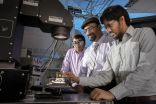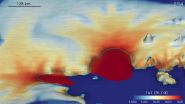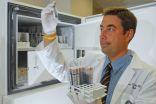(Press-News.org) Patient satisfaction is a very poor proxy for quality of care comparisons in elective cranial neurosurgery. Because deaths are rare events in elective cranial neurosurgery, reporting of surgeon or even department-specific mortality figures cannot differentiate a high or low level of the quality of care.
The current focus on patient safety in health care has led to public quality-of-care comparisons between health care facilities and even between individual health care professionals. In the United States, a new reimbursement method based on patient satisfaction ratings was announced by the Centers for Medicare and Medicaid Services in 2011.1 In New South Wales, Australia, patient satisfaction rates are publicly available online for open comparisons between treatment centers.2 In the United Kingdom, the National Health Service (NHS) mandates the National Neurosurgical Audit Programme (NNAP) by the Society of British Neurological Surgeons to report the 30-day risk-adjusted mortality rates for individual neurosurgeons in England.3
The Hospital District of Helsinki and Uusimaa, Helsinki, Finland, is one of the largest public, tertiary, and non-profit hospital organizations in the world with 22,000 employees and more than 500,000 treated patients each year. The first prospective observational patient-centered study on quality of care and patient satisfaction in elective cranial neurosurgery was conducted between 7 December, 2011, and 31 December, 2012, at the Department of Neurosurgery, Helsinki University Hospital, a part of the Hospital District of Helsinki and Uusimaa. Recently, the results of this study were published in the Neurosurgery.
In this prospective observational cohort study on 418 unselected adult patients undergoing elective craniotomy, recorded outcomes included anesthesiologist-reported as well as patient-reported postoperative complications, and overall patient satisfaction. Patients reported their subjective postoperative complications on a patient questionnaire at discharge. At 30 postoperative days, the overall patient satisfaction was surveyed with a structured telephone interview. Two-thirds of the patients had intracranial tumors and one-third underwent major cerebrovascular surgery. A majority (62%) were female and 30% were aged 65 years or more.
Major postoperative complications after elective craniotomy were rare. The most common major complication was transient or permanent hemiparesis in 41 (10%) patients. Altogether 17 patients (4%) underwent repeat craniotomy or postoperative endovascular intervention. The rates of other major complications were low: pneumonia 3%, silent stroke 1%, acute myocardial infarction 1%, pulmonary embolism 1%, and deep vein thrombosis 1%. With patient-reported postoperative complications such as transient subjective visual disturbances and difficulty of swallowing included, almost one-half (46%) suffered postoperative complications. Postoperative mortality in the cohort was low: the in-hospital mortality rate was 1% and 30-day mortality rate 2%
A vast majority, 94% of patients, rated their overall satisfaction as good or excellent. Even nine of ten patients with major postoperative complications gave good or excellent overall satisfaction ratings. Poor patient satisfaction ratings were most often reported by patients with minor complications such as urinary tract infections; many of these patients experienced multiple minor postoperative complications.
The results of this pioneer study show that the rate of major complications after elective craniotomy at the Department of Neurosurgery, Helsinki University Hospital, is exceptionally low, and overall patient satisfaction is high, even if postoperative major complications occur. In this one-year cohort at one of the largest tertiary neurosurgical centers in the world, only 10 patients died within 30 days after surgery indicating that mortality alone is too crude as an outcome measure for modern cranial neurosurgery, and an unreliable tool for comparisons between treatment centers and individual surgeons.
"Overall patient satisfaction is a very poor proxy for quality of care in brain surgery, because satisfaction ratings fail to reflect the occurrence of postoperative complications", says Dr Elina Reponen, and continues:
"Even in large neurosurgical centers, the postoperative mortality rates are too low to enable any meaningful comparisons between treatment centers or individual neurosurgeons."
"USA and Great Britain together with many other countries may need to define more reliable measures for reporting quality of care in brain surgery", Dr Miikka Korja concludes.
INFORMATION:
1. Centers for Medicare and Medicaid Services. Medicare Program: Hospital Inpatient Value-Based Purchasing Program. Fed Regist 2011; 76: 2454-2491.
2. Bureau of Health Information, Chatswood, New South Wales, Australia. Health Care Observer. http://www.bhi.nsw.gov.au/healthcare_observer. Accessed 14 April, 2015.
3. NHS England. My NHS: Data for better services. Consultants specialising in neurosurgery in England. https://www.nhs.uk/Service-Search/consultants/performanceindicators/1039. Accessed 11 August, 2015.
WEST LAFAYETTE, Ind. - New research findings contradict a fundamental assumption about the functioning of "organic" solar cells made of low-cost plastics, suggesting a new strategy for creating inexpensive solar technology.
Commercialization of organic solar cells has been hindered by inefficiencies, but the findings point toward a potential path to create a new class of solar technology able to compete with standard silicon cells.
"These solar cells could provide a huge cost advantage over silicon," said Muhammad Ashraful Alam, Purdue University's Jai N. Gupta Professor ...
A new international study is the first to use a high-resolution, large-scale computer model to estimate how much ice the West Antarctic Ice Sheet could lose over the next couple of centuries, and how much that could add to sea-level rise. The results paint a clearer picture of West Antarctica's future than was previously possible. The study is published today (18 August) in The Cryosphere, an open access journal of the European Geosciences Union (EGU).
"The IPCC's [Intergovernmental Panel on Climate Change] 4th and 5th Assessment Reports both note that the acceleration ...
A group of clinicians and geochemists are working to develop a test for the most common form of primary liver cancer, HCC (Hepatocellular Carcinoma). HCC kills over 600,000 people worldwide every year. It usually develops from chronic liver disease such as hepatitis or cirrhosis, but there is no good biochemical test to indicate when the cancer develops, meaning that even for patients most at risk, it is nearly impossible to know when a cancer may develop until symptoms appear. Now a multi-national group of scientists are developing a new test for HCC, based on methods ...
COLUMBUS, Ohio - Employees with a racially diverse group of friends outside of work may actually perform better at their jobs, a new study suggests.
Researchers found that workers who had more different-race friends in their personal lives than their co-workers also tended to have a more racially diverse network of friends on the job. This broader network was linked to employees who did more tasks beyond their job responsibilities and who, under certain circumstances, had more trust in their supervisors.
"Your friends outside of work actually have this connection to ...
This news release is available in French. This news release is available in French. New research shows that teaching young adolescents practical cooking skills leads to positive changes for the entire family. In an article published today in Applied Physiology, Nutrition, and Metabolism, an NRC Research Press journal (a division of Canadian Science Publishing), researchers evaluated the Kinect-Ed presentation and found an increase in the frequency of family dinners after participation.
Kinect-Ed, a 90-minute motivational nutrition education presentation, was ...
BOSTON, Aug. 18, 2015 -- Cranberries are often touted as a way to protect against urinary tract infections, but that may be just the beginning. Researchers fed cranberry extracts to mice with colon cancer and found that the tumors diminished in size and number. Identifying the therapeutic molecules in the tart fruit could lead to a better understanding of its anti-cancer potential, they say.
The team will describe their approach in one of more than 9,000 presentations at the 250th National Meeting & Exposition of the American Chemical Society (ACS), the world's largest ...
BOSTON, Aug. 18, 2015 -- The use of solar energy in the U.S. is growing, but panels on rooftops are still a rare sight. They cost thousands of dollars, and homeowners don't recoup costs for years even in the sunniest or best-subsidized locales. But scientists may have a solution. They report today the development of a unique, "green" antenna that could potentially double the efficiencies of certain kinds of solar cells and make them more affordable.
The researchers are presenting their work at the 250th National Meeting & Exposition of the American Chemical Society (ACS). ...
INDIANAPOLIS -- People being treated for bipolar disorder and other psychiatric illnesses are at greater risk of attempting suicide, but physicians may now have tools to predict which of those individuals will attempt it and intervene early to prevent such tragedies from occurring.
Researchers at Indiana University School of Medicine reported Tuesday in the Nature Publishing Group's leading journal in psychiatry, Molecular Psychiatry, that they have developed blood tests and questionnaire instruments that can predict with more than 90 percent accuracy which of those patients ...
An unprecedented potential "molecular tweezer" called CLR01, reported in the journal eLife, not only blocks HIV and other sexually transmitted viruses, but also breaks up proteins in semen that boost infection.
Semen is the main vector for sexual HIV transmission. It contains proteins that assemble into very stable polymers called amyloid fibrils, which can enhance HIV infectivity by up to 10,000 times. Scientists led by the University of Pennsylvania (USA) and Ulm (Germany) now show that a molecule with the shape of a tweezer not only destroys HIV particles but also ...
A new study shown that meteorite impacts on ancient oceans may have created nucleobases and amino acids. Researchers from Tohoku University, National Institute for Materials Science and Hiroshima University discovered this after conducting impact experiments simulating a meteorite hitting an ancient ocean (Fig. 1).
With precise analysis of the products recovered after impacts, the team found the formation of nucleobases and amino acids from inorganic compounds. The research is reported this week in the journal Earth and Planetary Science Letters.
All the genetic information ...



